John Vaughan
| John Vaughan 6 Shed portraits. Newton Heath. |
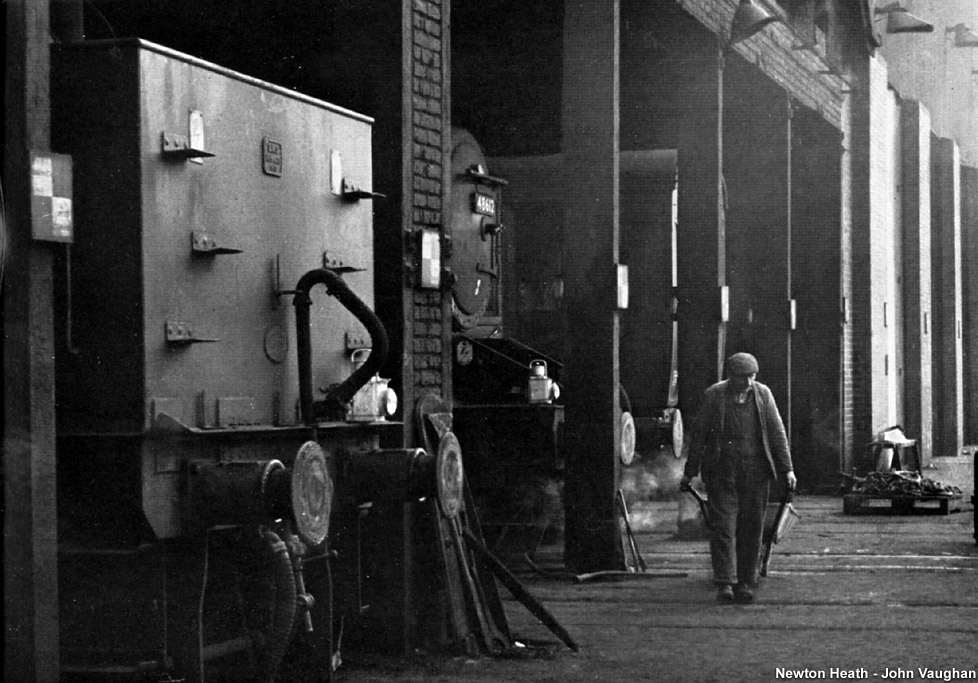
| John Vaughan 7 Water Column parade, Trafford Park. |
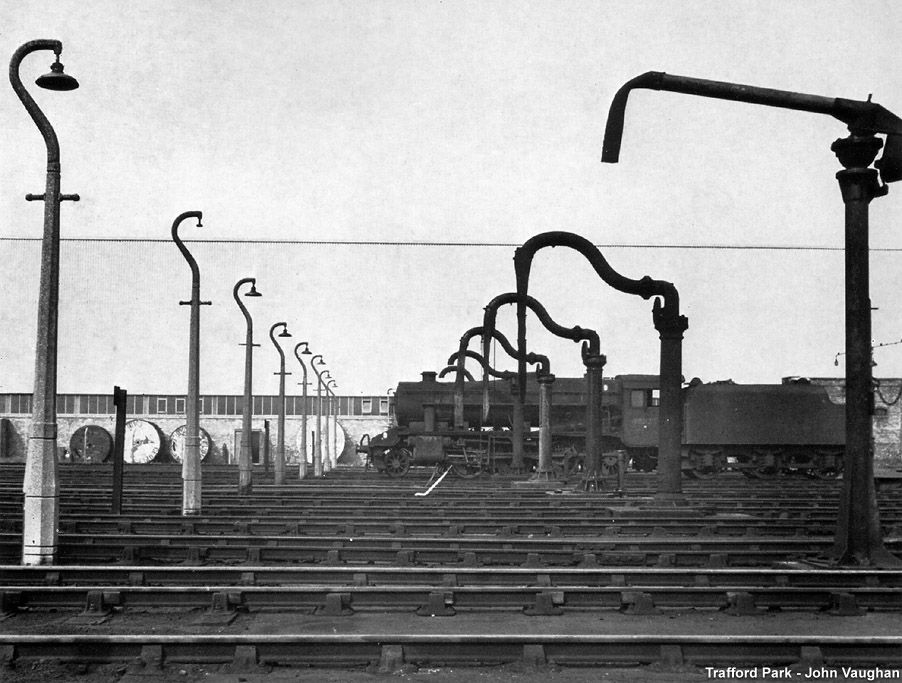
| John Vaughan 8 During the weekend of June 3/4, 1967, privately preserved LNER A4 Pacific No. 4498 Sir Nigel Gresley ran excursions on the SR from Waterloo to Bournemouth and Salisbury. Sir Nigel Gresley is seen here on June 3 between Woking and Brookwood heading the Bournemouth excursion. |
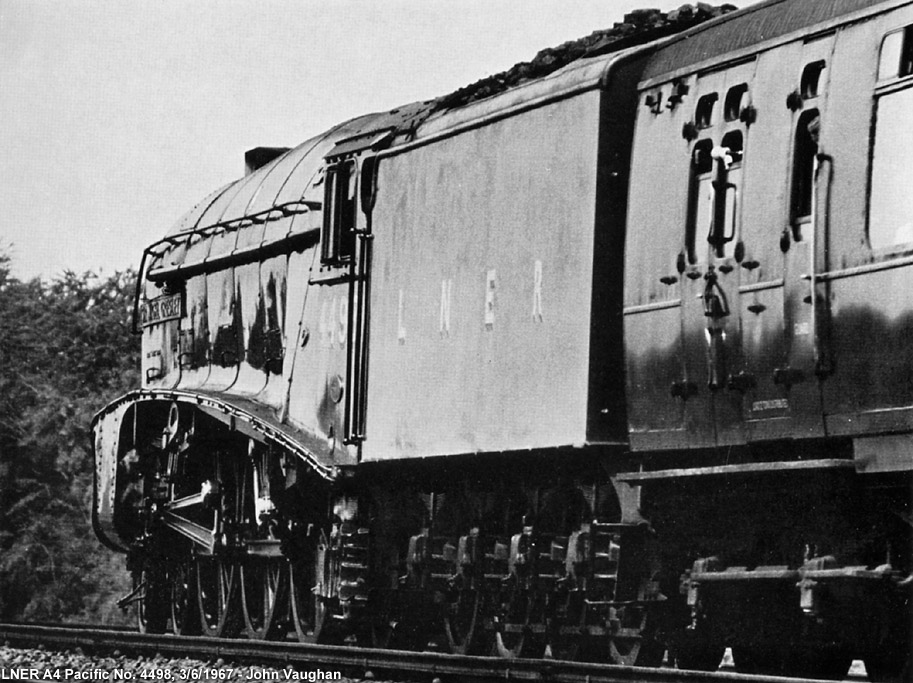
| John Vaughan 9 Eyes down for the "Mendip Merchantman" special on January 1, 1966. |
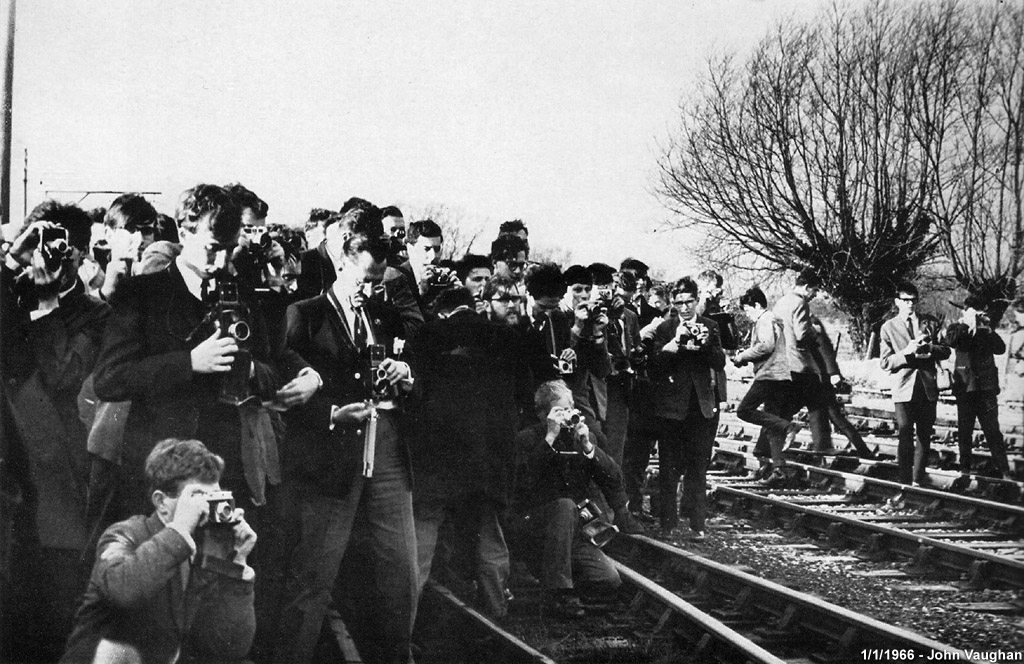
Leslie Nixon
| Preface. |
Steam PorfolioLeslie NixonGRINDLEFORD | 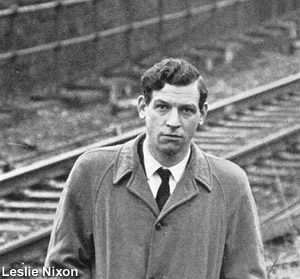 |
It is only natural I suppose that I have been keenly interested in railways from a very early age, since both my father and grandfather were footplatemen serving at Barnsley, Mexborough, Stratford and Wath depots and sharing some 65 years' service. My earliest memories are of being taken to Barnsley Exchange station to see the selection of former Great Central Railway engines on shed. Later in life spare time alternated between visits to Crewe, Doncaster, Manchester, etc, and, when we had spent up, nearby Worsborough Bank. Worsborough was indeed a schoolboy's paradise in the early 1950s for although it lacked the glamour of express trains it was in those days remarkably easy to get footplate rides up and down the bank. I spent many happy summer days on the footplate of a J11, 04 or the Garratt. A sight (and sound!) never to be forgotten was a heavy coal train plodding up the 1 in 40 in the hands of a pair of 2-8-0s in the lead and the 2-8-8-2 in the rear. Several years of study enforced a reduced interest in the railway scene until, in common with many, I realised in the early 1960s that time was indeed getting very short and not a moment was to be lost if I was to obtain a personal record of the steam era. A considerable portion of my savings was invested in a pair of Exakta Varex Ila bodies with a selection of interchangeable lenses. Armed with reels of FP3 (developed in Acutol) and Kodachrome II film, I have since spent many happy hours by the lineside in shirt sleeves or overcoat and gumboots at locations as varied as Perth and Pancorbo. My favourite haunts are undoubtedly those superb scenic locations on the Settle & Carlisle or Waverley routes. How I wish we could turn the clock back some 15 years or so when local passenger and pick up freight trains were working on such exciting lines as Hexham to Riccarton Junction and Hawes to Northallerton. August 5, 1968 was a sad day indeed but several bright spots remain; at least we shall have steam in Europe for a number of years yet, while nearer home there are the preserved lines, and a large but fast dwindling assortment of industrial steam locomotives. | |
| Leslie Nixon 1 Shadows at Sheffield Midland, December 1964. |
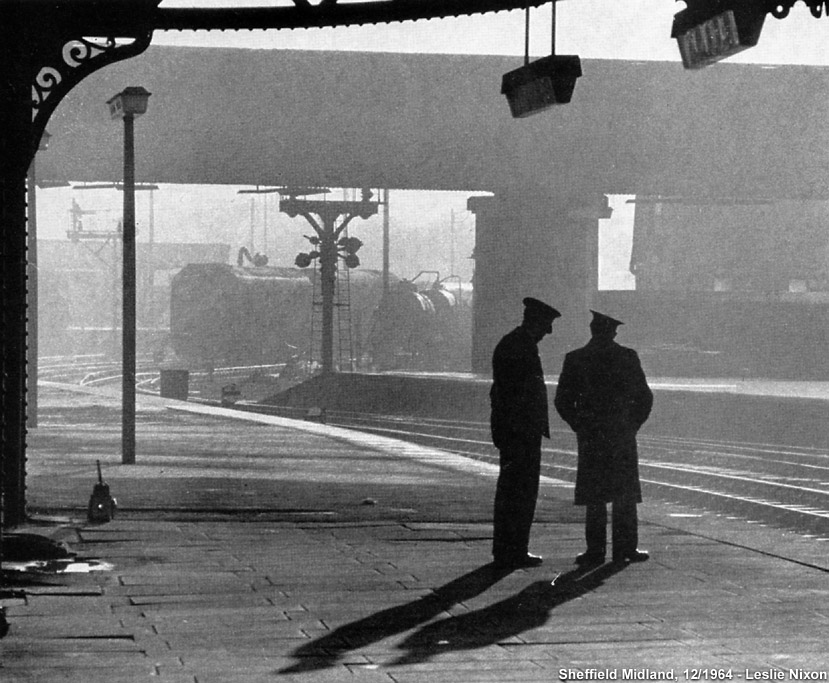
| Leslie Nixon 2 Stanier Class 8 2-8-0 No. 48399 takes the east to north curve at Shipley with the 10.40 Hunslet-Carnforth freight on February 18, 1967. |
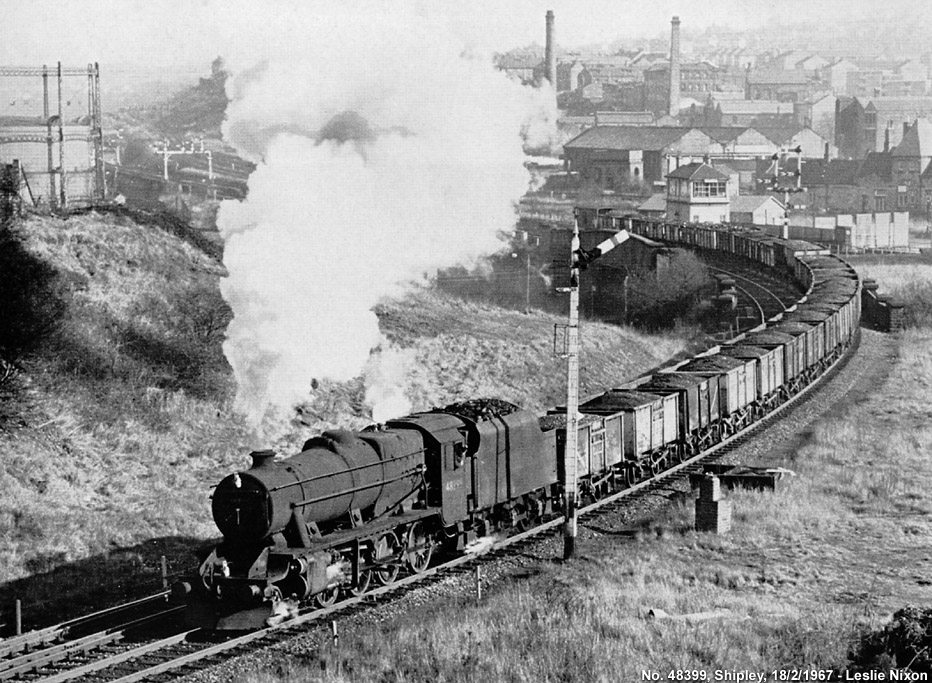
| Nuovo! Leslie Nixon 3 BI 4-6-0s. No. 61240 storms up the bank between Copley and Armley Moor with the Bradford portion of a summer Saturday train from the east coast to the West Riding on June 18, 1966. |
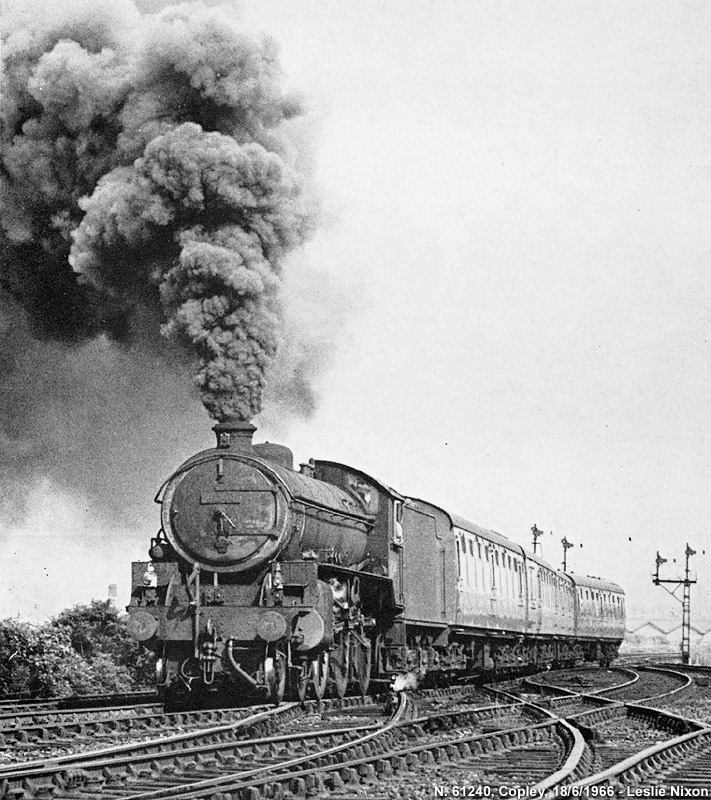
| Nuovo! Leslie Nixon 4 No. 61002 ambles through Wakefield Kirkgate with a freight for Healey Mills on November 26, 1966. |
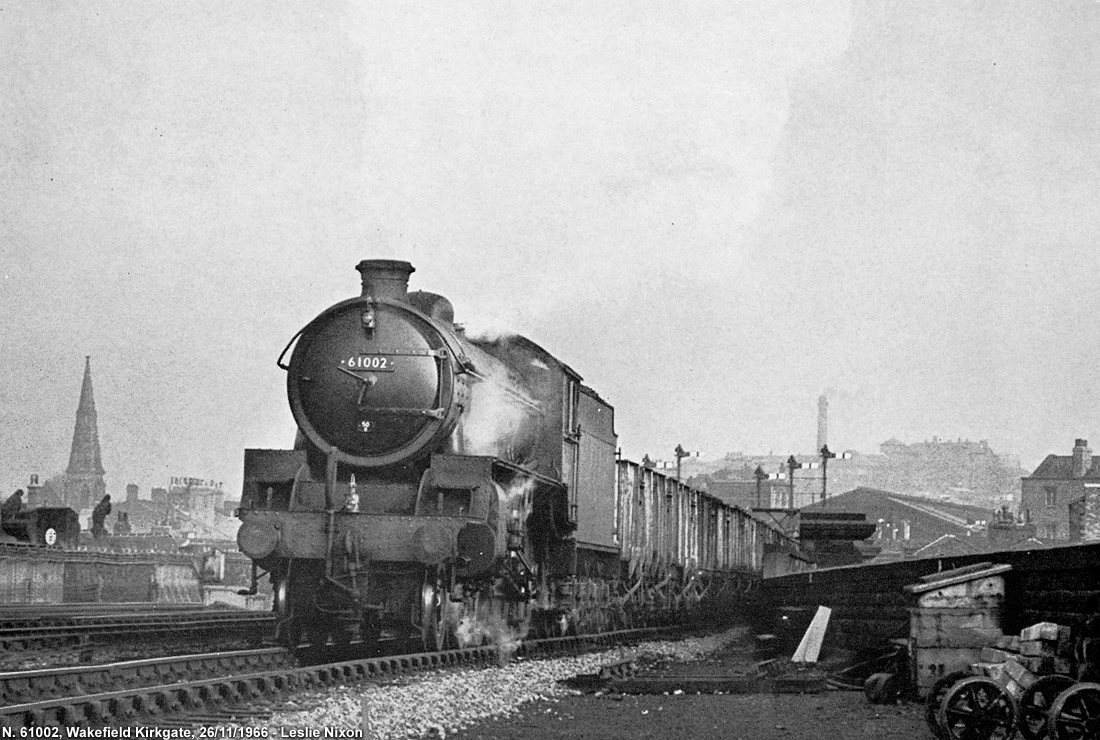
| Nuovo! Leslie Nixon 5 No. 61337 leaves a smoke screen as it climbs the bank to Copley with the 4.10 p.m. Leeds Central-Cleethorpes on April 13, 1966. |
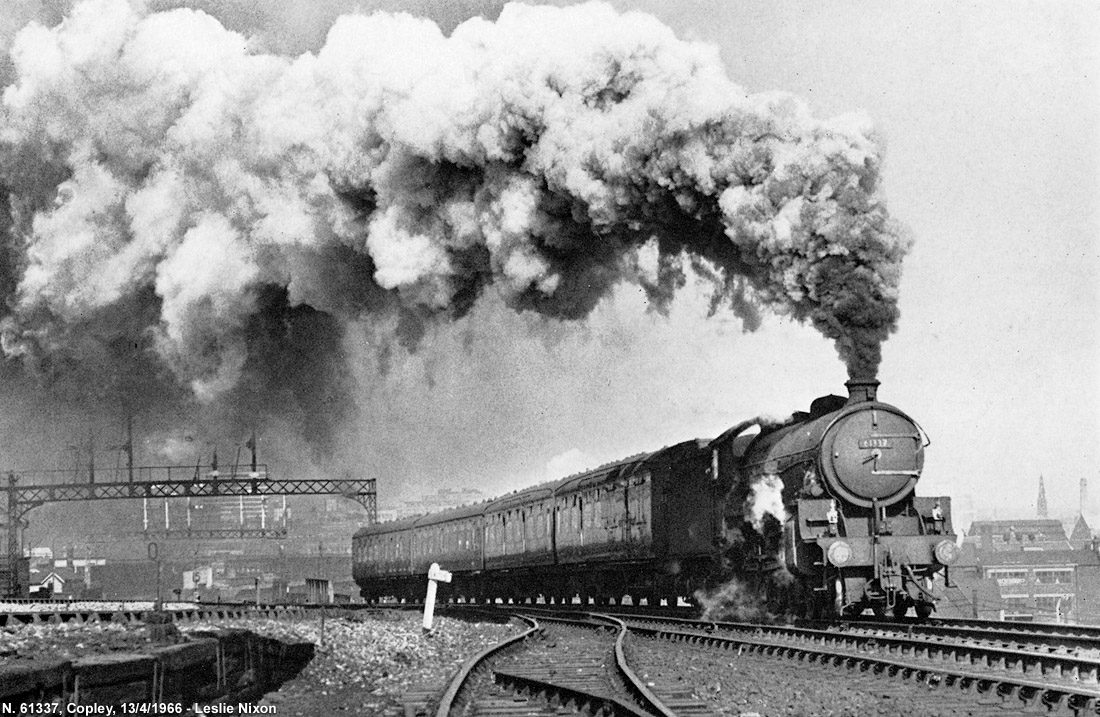
Foto 29-38/57 << Pag. precedente ^ Indice ^ Pag. successiva >>